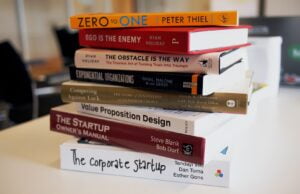This post shares updated guidance for producing a self-published ebook for free (or almost free). We’ve designed these steps to suit a range of authors. So, if you’ve just joined us here at the Alliance of Independent Authors and are planning your first book, or if you’ve been self-publishing for a while but want to brush up on the most recent advice, read on.
You may also be completely new to indie publishing, and if so, welcome! We are the Alliance of Independent Authors, a global membership association for self-publishing authors. Our mission is ethics and excellence in self-publishing, and throughout this guide you’ll find links to further guidance we provide to support indie author careers at our Self Publishing Advice Center, where you can also find out about becoming a member of our organisation.
Introduction: self-publishing an ebook for free
Here at the Alliance of Independent Authors, we believe self-publishing is an important way to make sure story-telling and knowledge sharing through publishing is open to everyone. In fact, we have an ongoing campaign, Self-Publishing For All which aims to remove barriers to publishing, including offering much of our experience and advice for free.
But, we know that if you have little money to invest, publishing can feel like a closed shop. Don’t panic! There are ways to publish with little or no expenditure. However, low funding does not need to mean low-quality. As our indie author community learns and grows, the quality of our work increases, and so does the expectations of our readers. Completing every publishing step to a high standard before launching our books is important for finding and keeping readers.
Most of what we’ll include in this post is free, but we’ve included one or two tools you may want to try that are very inexpensive, similar to a few coffees a month. This guide also assumes you have internet and computer access. If this is not true for you, take a visit to your local library or community centre as you may be able to access both for free or low cost there. At the end of this post, you’ll also find some recommendations for where you might prioritise investment if you have some budget to work with, or if you decide to continue to build your author business.
Why do we start with ebooks?
An ebook is the most economical way to produce your first book, as once the ebook is produced there are no ongoing print or distribution costs, and profit from any sale you make (after the cut is taken from sales platforms if you use them), you can keep or reinvest. For fiction in particular, most surveys agree that ebooks make up the majority of indie book sales for the majority of indie authors, so they can be a critical way of sharing your story. Once you have mastered the ebook, many authors then move to master print and audiobook publishing. Both of which require their own considerations and some unavoidable investments.
One watch-out: it’s worth considering print books earlier if you are writing non-fiction, such as how-to guides, as readers of some topics prefer print. Similarly, if you are planning to use some visual marketing methods straight away, such as TikTok, having a print book available is critical — these readers like to visually show the physical books in their content. So, always consider your audience needs before you get going.
Step-by-step guidance to self-publishing an ebook for free (or almost free)
1. Complete your manuscript
This may sound obvious, but it is only when you have a fully complete manuscript that your publishing journey can truly begin. So, don’t get side-tracked by the process of publishing before you have a full book manuscript completed and ready for the final development stages (steps 2 to 4).
2. Do your research

Photo by Daria Nepriakhina 🇺🇦 on Unsplash
Get hold of ten recent, successful books in your genre, either for free from a library or look at them online. Observe them from a publishing perspective, particularly editing, design, production and marketing. Analyse their covers, look at their blurbs, read their book descriptions, take a look at any reviews and see what people like about them. This sort of comparison will be a tremendous help to you as you work through the future steps to publication. (Ideally, of course, you should read the books you are competing with as well, so you know the genre you’re joining and where you fit in).
3. Finalise your title
Your title is the first piece of information someone may see when they find your book, so giving thought to what this might be is an important step. Now you have researched your competition this might influence how you title your book, to bring it in line with others in your genre and reader expectation. Michael Hyatt came up with a useful PINC Acronym to help with book titling. And note that, although this may be most useful for non-fiction, the subtitle facility on sites such as Amazon can make it useful for fiction too. You can use the subtitle space to share more information about the content with your readers to ensure they know what they are investing in.
- Promise: make sure readers know what to expect from your book.
- Intrigue: entice a reader to pick up your book.
- Need: if there is a problem that your book answers, make this clear.
- Content: keep it simple by stating the content type up-front.
4. Undertake editorial development
For editorial stages, you can use ‘beta readers’ to help you develop, deepen and improve your manuscript. These are friends, colleagues, or contacts from your writing networks who love to read in your genre and can give you useful feedback on your book. You can also pick up some tips for ‘self-editing’ your novel from this ALLi Blog Post: What You Can Learn from Professional Editors.
Plan your editing process in phases to mirror the traditional publishing. A typical process would be:
- Overall Manuscript Critique: this involves looking across your storyline, voice, and character development. At this stage, you are looking to pick up plot holes, or lack of explanation as to a character’s actions or reactions, too many subplots (or not enough), all these areas may need work before the next phase.
- Line Edit: Once the story and characters are fully developed, this edit looks to identify any issues specifically with the writing style and language used. For example, do the words used convey the story and characters effectively, does the language flow, are the sentence structures easy to follow? At this stage you do not need to look at grammar, spelling or punctuation errors.
- Copyedit: Now you are happy with the story, characters and language flow, the copyedit looks for specific technical issues. This could include inconsistency of spelling or style, misuse of punctuation, grammatical errors. You can use free or almost free online grammar and proofing tools like Grammarly or ProWritingAid to pick up key errors. A friend or relative who has strong written skills can be a great second eye here too. Ask them to read and review your manuscript for errors. clarity, consistency, and overall readability of the text.
5. Typeset your manuscript
This is the process of setting up the pages for your ebook so that the chapters, pages, lines, headings, paragraphs, images or graphics, and any other visible elements are all in the right place. This is a key moment when your manuscript begins to look like a professional book. And if you are producing for ebook only, this is more straight forward, as the ebook files need to be able to adjust to a user’s preferences (such as word size or size of screen) so some decisions to be made with a print book can’t be made with an ebook. Similarly, your ebook font may default on some platforms to a sans-serif font, as this is usually considered easier for people to read on a screen, so fewer decisions need to be made concerning font choices either. There are lots of websites out there that offer free online tools to help you create your e-book file and typeset, or offer guidance to help you do this from home through products such as Word. Just two are linked here, but take a look around to find one that works for you: Reedsy book typesettting or Draft2Digital eBook Formatting Guide.
6. Complete the final proof
This critical element takes place as a final stage before your have a version of your manuscript ready to upload. At this stage, you are only reviewing your manuscript for any final mistakes not yet picked up, or that have arisen during the editing process. You may also spot awkward copy or page breaks produced during typesetting. A final proof is very difficult to undertake yourself, as you are too ‘close’ to your work, and this is true for all writers. So, try to get an external view of your manuscript for a final read through. Sometimes newly-trained proofreaders will run a proof for free in return for practise and a testimonial. You may find these on writing forums. Otherwise, returning to your trusted supporters who have an eye for written work can help again here. Those working in legal professions, communications, marketing or journalism may be happy to proof for you and will have transferable skills to offer. Don’t worry if they aren’t keen on your genre, this doesn’t matter at this stage, as they are looking purely for final errors.
7. Design your cover
Now you have your written words ready to go, you can add the all important cover. Free online design tools, such as Canva, can create e-books covers. Research your genre before you design to ensure it fits alongside competitors, for example do most of them use photography, or illustrations? Are they colourful and patterned, or somber and subtle? It may be tempting to try to ‘stand out’ from the crowd, but readers look for books that immediately tell them that they are similar to those they already enjoy. So, fitting in can be more successful, particularly for genre fiction. ALLi partner member 1106 Design has shared some more tips for designing a great book cover in this post: How to Design a Great Book Cover.
8. Write a compelling marketing blurb

Photo by Thought Catalog on Unsplash
It’s worth spending a good deal of time working on your book description. As well as sitting on your sales pages, this is also copy you will use across your marketing activity. The description you write is a critical way search engines, and therefore the right readers, will find your book. And it’s also free! Descriptions are usually no more than 200 words, and should describe your story or the information your book provides in an engaging way. As before, look at comparable books to ensure you match the tone and approach of successful books in your genre. And use short sentences, bold, italics and paragraphs to make sure it’s easy to scan for a busy buyer. You can find more tips for writing a book blurb, here: ALLi Blog – Writing a Book Blurb.
9. Launch your author website
Having your own website is vital for a self-publishing author. It is your central hub online, showcasing your work and getting readers onto your mailing list. If you are expecting to build a career from your indie publishing, your website should ideally have e-commerce options, so you can sell books directly to readers. But if you are planning to sell through other providers or publish just one book, you may want to keep it simply as a hub for information and a contact form. Usually people use use their author name as the domain name. If it’s taken, you can also add “Author” too (e.g. SarahSmithAuthor.com). WordPress is the open-source option, it’s free but isn’t particularly user friendly for those without digital experience. There are lots of low-cost options out there which offer a monthly or annual payment, including Wix or Square Space. Look out for offers to save money if you take this route. More on author websites can be found in this post: How to Create an Author Website that Converts.
10. Write your author page
As well as your website, make sure you have a strong author page on Amazon and other book retail platforms if you go wide immediately, like Apple Books, Kobo and Google. Ensure you have a good, clear author photo that captures who you are and what you want to say about yourself as an author. Usually one against a white or plain background looks professional and is easy to achieve against a white wall. In your biography, don’t forget to share a bit about yourself, your books, list your website address, and encourage readers to follow you on social media if you are active.
11. Build your book reviews
Reviews are really important for showing sales platforms that readers enjoy your work and therefore that they should promote your book to others. They also reassure readers that your book is of high quality. Approach online reviewers or book bloggers in your genre and ask them to review your book. You can send ARCs (Advance Reader Copies) of your book in advance to selected reviewers so they are ready to go when your book is live, and you can use reviews in other ways, such as on your own website, or on book covers, too. Remember, they must be honest reviews that are not paid for, or they will contravene sales platform rules. For more on building book reviews, take a look at: First 50 Book Reviews.
12. Upload to your selling platforms
ALLi always recommends going wide with your books, which means selling on multiple platforms. But if you are undertaking this process for the first time, you’ll probably want to start with the biggest ebook platform, Amazon. Set yourself up with a free Amazon account on their Amazon KDP platform, and then follow their easy-too-use steps to upload your manuscript and your cover art. There will also be sections to complete to add the book description you wrote earlier. Your eBook files must be one of the correct formats to upload successfully. For help choosing which eBook file to use, Amazon has this quick article on ebook formats.
13. Select your price point
When you have uploaded all your book details, you can then select the price. Try to keep it around the same as the books you are competing against. Platforms such as Amazon show you how much you will actually receive per sale when you select your price. This is the ‘Royalty’ payment, which is the money you receive after paying Amazon to use their platform for each sale. A similar process takes place on other sales sites.
Amazon also offers KDP Select, which is an exclusivity package. This means they will offer your book to those people who have a reader subscription with them, and you will be paid by the number of pages read. However, you won’t be able to sell your ebook on other platforms. This is a decision only you can make, but the choice to sign up is as easy as pressing a button in the upload section of the KDP website. For more information on KDP Select, you can look here: KDP Select Information
14. Select keywords and categories
Also, on the upload pages, you can add keywords and categories which help readers find your book when they search on a sales website. Revisit your ten comparable books again and see how they are listed on platforms such as Amazon. Get yourself into the most appropriate categories on Amazon KDP. Make sure your keywords are as strong as possible; these are the words you choose to describe your book when you upload it to the website. Don’t be afraid to change up your metadata as often as you want to optimise. It costs nothing but time and thought. For more recent information on keywords and categories, look at this ALLi post: Book Metadata, Keywords, and Amazon Categories.
15. Give your book an ISBN
ISBNs (International Standard Book Number) are unique identifier numbers books are given to track them. They sit alongside the barcode on the back of the book, and platforms like Amazon will automatically add the ISBN and barcode to your cover artwork if you choose to produce in print later down the line. Platforms like Amazon offer one-off free ISBNs for ebooks, however, you might prefer to purchase an ISBN that will be recognised more widely and can be used for print versions too. How to do this varies by country, but they usually come in bundles of ten and are fairly low cost. You can use the International ISBN Agency to find which agency manages your country’s ISBN registrations.

Photo by Towfiqu barbhuiya on Unsplash
16. Select a publishing date
Once you have completed all the details for your book, you can save it as a draft or choose a release date. This has two options: ‘release now’, meaning people can buy it straight away, or ‘pre-order’. The second option works well if you plan to drive people to the sale page ahead of launch. If you get a selection of pre-orders, your ranking will be higher when the book goes live, as all those orders will go out at the same time.
17. Find marketing and promotion opportunities
From contacting local papers and radio stations, to attending literary events, book fairs, or talks at local schools and community groups, there are lots of ways to raise the profile of your book. You could also offer speak on a podcast, or write a blog post for another author in your genre. The more you reach out and network, the more confident you will become talking about your book. If you research ahead of launch, you can have a few activities planned for when your book goes live. Or, plan activities at points across the first few months of sales to fit around other work or caring commitments.
18. Monitor your data and adapt
The beauty of producing an ebook is that you can go into your seller platform ‘dashboard’ and see what sorts of sales you have made and when. You can then cross reference with activity you’ve undertaken, such as marketing activity, to see what impact it has had. In your dashboard you can also change your keywords, description, or price point, as well as uploading new book files if you discover a mistake after launch. Phew!
Future financial investments
If you are looking to make self-publishing part or all of your longer-term career, expect to invest some income back into your publishing business as you grow. While also paying yourself of course!
Publishing, like any business venture, requires investment to grow and develop. And in our blog we have plenty of posts to help you build your financial know-how and mindset when the time is right for you. Some priority areas to consider for investment include:
If you are building your business, a newsletter is a great way to communicate with your readers. Many authors also build relationships with other authors in their genre to mention one another in your newsletters. These are known as “newsletter swaps” and help reach readers who may enjoy your work. You may want to invest in a newsletter add-on to your website to manage your newsletter list and send out quickly and easily
A typical way to gather names and details for your newsletter list is to produce a ‘Reader Magnet’. This is a short book offered as a free download on your site in return for people joining your mailing list. You can promote the free reader magnet in the end matter of your book and if you undertake interviews or other promotional activity. A reader magnet might not have a cost, but it does take up some of your creative planning and writing time; and time is money. However, it can be worth the effort to build a dedicated following. If you are considering a reader magnet, read this post for more information: ALLi Ultimate Guide to Reader Magnets.
-
Proofreading and Editing Services
We have included tips here for proofing and editing using friends, contacts, or your own skills, which can work well for a first-time publishing experience. However, it does not fully replace the professionalism and learning you gain from working with a skilled proof-reader and editor. Investing profit here will improve your writing immeasurably and ensure you can compete with other authors who will no doubt have invested in this sort of support for their work. ALLi has a suppler list which you may find useful if you are considering bringing in support: Self-Publishing Suppliers Directory.
-
Marketing and Promotion Support
You can undoubtedly drum up some marketing activity for free, as outlined in this guide. However, should you want to move to the next level, advertising your book where your audience is already, including on sales sites and on social media platforms, can really boost your profile and sell more books. However, getting it right can be tricky and it can take some time to master. You can find ALLi blogs on marketing and promotion, here: Marketing and Promotion Blog Posts.
-
Administration Assistance
As your business grows, you may eventually want to consider some administrative support. This may seem a way off now, but it’s worth remembering it’s an option if your business really takes off. A virtual assistant, for example, can reply to emails, organise your attendance at events, or monitor your data. This will save you precious hours and days for writing.

Sacha Black
Author and ALLi Team Member, Sacha Black, who is now writing full time, has taken on a virtual assistant. She says:
There are a few things that only I can do: writing books, creating courses, recording podcast interviews. Everything else doesn’t have to be done by me. My stance is that anything other than those items mentioned, have the potential to be outsourced.
Here are a few ideas: Scheduling social media posts; Creating social media graphics; Setting up mailing list emails, gathering links and creating images; Podcast admin, creating graphics, scheduling and uploading audio and images, liaising with guests; Uploading publishing files; Applying for regular book promotion newsletters; Researching various topics; Completing spreadsheets and tracking performance; Pitching influencers; Pitching rights buyers

Photo by Eliott Reyna on Unsplash
Find out more
The most successful self-published authors have one thing in common: they never stop learning. For pretty much any question you may have, ALLi’s Self-Publishing Advice Center will have the answer with blogs, podcasts and guidebooks avaialble. You can look up whatever you need to know in our knowledge blog and podcast archives. Our information and education is free and if you haven’t already joined, one day we hope to welcome you as a member:



